The world’s first hard disk capacity of 1 terabyte was released in 2007. To overcome a kind of psychological mark managed the company Hitachi. Today, eight years later, this characteristic is the drive actually not surprising. It is considered to be the minimum required to store data on your computer. This year were presented 2.5-inch solid state drives with a capacity of 2 TB. On the background of the on sale hard drives of 8 TB and 10 TB ceases to amaze and 6-terabyte models of hard drives. They have become part of everyday life of computer users, because the presence of such a storage system is a great help in creating home library of digital data. In the review four popular models from HGST, Seagate, TOSHIBA and Western Digital.
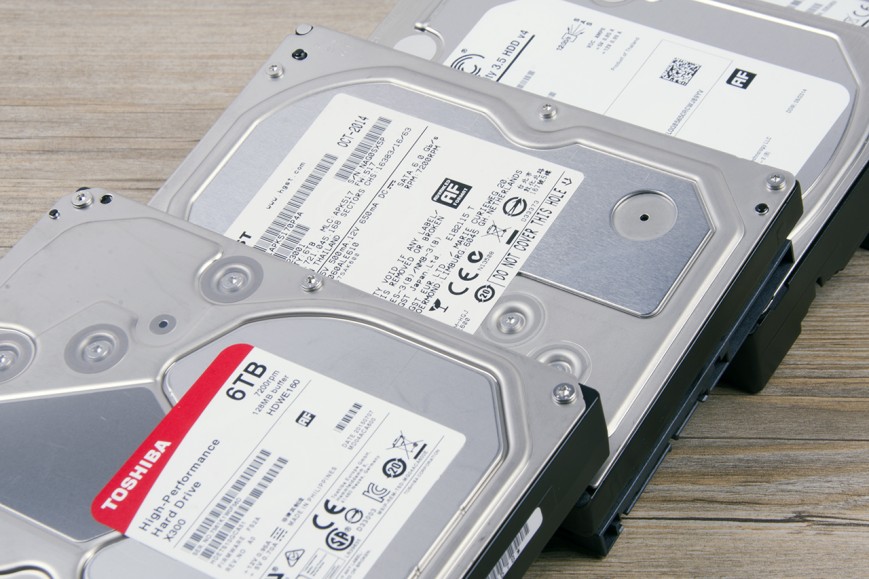
Review the hard drives of 6 TB
Technical characteristics and design features
How to create a hard disk capacity of 6 TB? You need to take five pancakes density of 1.2 TB each and combine them into one 3.5-inch housing. That is exactly what the winchesters were created, presented in today’s testing. The only exception is the Seagate model in the design which is listed six plates of lower density. Actually 1.2 TB today is not considered a record capacity. This year the same Seagate introduced the model Archive HDD (ST8000AS0002) with plates volume is 1.33 TB. And yet the 6 TB is a great stepping stone for the future.
HGST HUS726060ALE614
Seagate ST6000NM0024
TOSHIBA HDWE160EZSTA
WD WD60EFRX
Line
Ultrastar 7K6000
Enterprise Capacity 3.5 HDD
X300
Red
Form factor
3,5’
3,5’
3,5’
3,5’
Thickness
26.1 mm
26.1 mm
26.1 mm
26.1 mm
Interface
SATA 3.0
SATA 3.0
SATA 3.0
SATA 3.0
The declared volume
6 TB
6 TB
6 TB
6 TB
The number of platters/heads
5/10
6/12
5/10
5/10
The spindle rotation speed
7200 rpm
7200 rpm
7200 rpm
~5400 rpm
The average data transfer rate
227 MB/s
225 MB/s
N/A
175 MB/s
Time between failures
2 million hours
2 million hours
N/A
1 million hours
Buffer size
128 MB
128 MB
128 MB
64 MB
The resistance, on/off
70G (2 MS) / 300G (2 MS)
70G (2 MS) / 250G (2ms)
70G (2 MS) / 300G (2 MS)
65G (2 MS) / 250G (2ms)
Weight, g
715 g
780 g
770 g
750 g
Warranty
5 years
5 years
2 years
3 years
Price
21 000 rubles.
20 500 rubles.
19 000 rubles.
21 000 rubles.
Price.ru
Quote:HGST HUS726060ALE61457011
Quote:Seagate ST6000NM002457011
Call for price:TOSHIBA HDWE160EZSTA57011
Request rates:WD WD60EFRX57011
The HGST can safely be called the leader in this industry. The fact that this firm, now owned by Western Digital, has released the first hard disk capacity of 6 TB. She managed to create a commercial version with full storage capacity of 8 TB and 10 TB, respectively.
Line of Ultrastar hard drives 7K6000 present on the market for quite a long time. This server-based solution. Therefore, the model HUS726060ALE614 is characterized not only with impressive volume and speed, due to the high spindle rotation speed, but a 5-year warranty, as well as an impressive time between failures. Since Ultrastar 7K6000 belongs to the category server hard drive, on sale there are variations of SAS (12GB/s). If we are talking about the SATA version, then, in addition to a 6-terabyte models offer drives with a capacity of 2 TB, 3 TB, 4 TB and 5 TB, respectively.
The design of the Ultrastar 7K6000 have several interesting technologies. For example, there is used the so-called media cache — a special area on the plate surface that act as non-volatile cache. As a result, instead of recording data to the requested sector of the drive head puts their media cache. Only then, in simple, the data will be moved into the desired area of platinum.
The second technology, called Rebuild Assist, accelerates recovery of RAID array, if one of the hard drives failed. This should be complied with one condition: part of the data needs to be accessed and read from the damaged drive. The Rebuild Assist feature is included in the standard SATA 3.2.
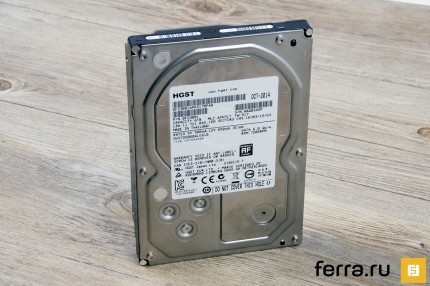
HGST Ultrastar 7K6000 HUS726060ALE614
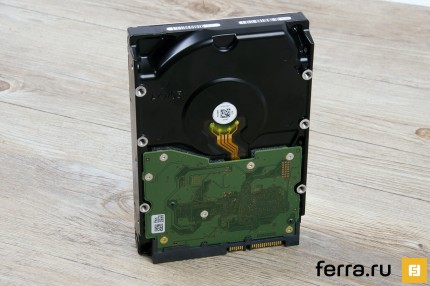
HGST Ultrastar 7K6000 HUS726060ALE614
In the “arms race” Seagate literally breathe in the back of HGST. As I’ve noted previously, the company introduced its first 8-terabyte drive using helium and a technology called “shingled” recording SMR. Very soon should appear in the commercial version of disk capacity of 10 TB, which will involve six plates with a volume of 1.66 TB each.
As the name implies, the line Enterprise Capacity 3.5 fourth version is intended for use in the server segment. That’s why there are models with SATA and SAS. In the photo below just zapechatlena model ST6000NM0034 equipped with an SAS connector. However, ST6000NM0024 looks exactly the same. All in all, the Enterprise Capacity 3.5 line, there are a couple dozen models with capacities of 1 TB, 2 TB, 3 TB, 4 TB, 5 TB, 6 TB and 8 TB.
Complicate the design of the disk resulted in the fact that the attachment at the bottom of the device has shifted slightly relative to the “civilian” models. However, this restriction will be noticeable only in very exotic schemes of installation.
Line Enterprise Capacity 3.5 HDD at least not inferior to Ultrastar 7K6000 of adaptability in the sensor to compensate for vibrations, there is a humidity sensor, and for the safety of data during a clock operation in RAID environments meets Super Parity. Power consumption is controlled by PowerChoice feature for automatically alternating a few plans for the supply of the drive depending on load.
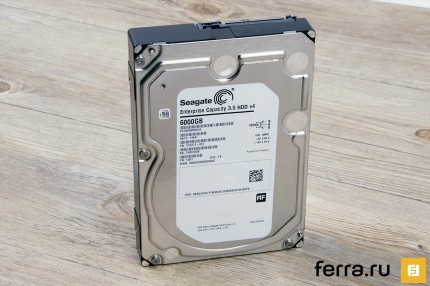
Seagate Enterprise Capacity 3.5 HDD ST6000NM0034
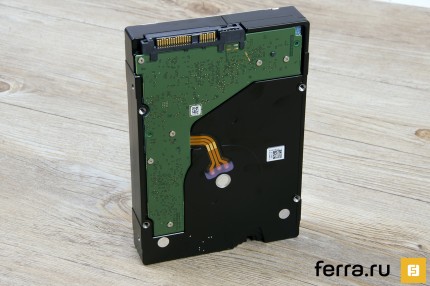
Seagate Enterprise Capacity 3.5 HDD ST6000NM0034
TOSHIBA is not sitting idly by, and develops technology media. For example, this year the company managed to create a 2.5-inch hard disk volume of no less than 3 TB. However, at a thickness of 15 mm to be used in laptops would be very problematic. It is therefore not surprising that the portfolio of the Japanese manufacturer has a hard drive capacity of 6 TB.
The line of hard drive X300 is positioned as a manufacturer of drives with a very high level of performance. In principle, among the “trucks” of the model HDWE160EZSTA default settings. The spindle rotation speed is 7200 rpm, a buffer memory is 128 MB. The X300 series has several storage 4 TB and 5 TB. The smaller disk is already part of the line P300.
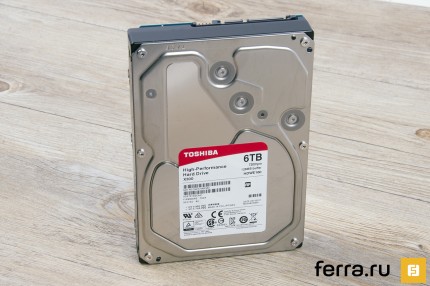
TOSHIBA X300 HDWE160EZSTA
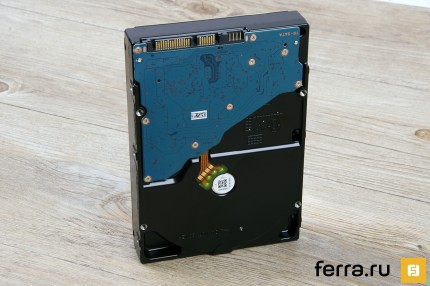
TOSHIBA X300 HDWE160EZSTA
The Red line of hard drives designed for use in home storage type NAS with 1 to 8 bays. Structurally, the “red” drives are very similar to the Green series, which, as you know, recently kicked the bucket. Namely, the device is equipped with 64 MB buffer memory. The spindle rotates at approximately 5400 rpm Approximately, because the IntelliPower technology allows within certain limits (known only to WD) to change the rotational speed of pancakes.
From the Green line series Red difference increased to 35% of the time between failures. The manufacturer guarantees trouble-free operation in 24/7 mode. Words are supported by spread 3-year warranty (versus two years for the “green” drives). The estimated number of cycles Parking the heads is 600 000 300 000 Red and the Green. Plus the block of the magnetic plates balanced in two planes, which increases the performance and reliability of disk drives.
In the Red series includes eight models with capacities of 750 GB, 1 TB, 2 TB, 3 TB, 4 TB, 5 TB and 6 TB respectively. There is still a line of Red Pro is designed for NAS 1 to 16 compartments. Unlike the normal “red” drives, the older models are characterized by having 128 MB buffer memory and increased to 7200-rpm spindle speed.
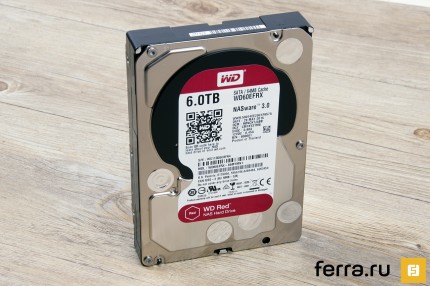
WD Red WD60EFRX
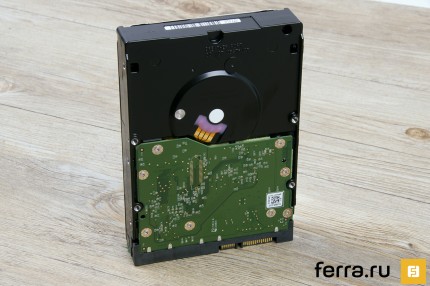
WD Red WD60EFRX
Testing
Test stand:
- Processor: Intel Core i5-4790K @4,5 GHz
- CPU cooler: Corsair H75
- Motherboard: MSI Z97 MPOWER
- Storage: OCZ Vertex 3, 360 GB
- RAM: DDR3-2133 2x 8 GB
- Power supply: LEPA G1600, 1600W
- Peripherals: Samsung U28D590D, ROCCAT ARVO, ROCCAT SAVU
- Operating system: Windows 10 x64
In a recently published review hard drives of 1 TB, I have already touched upon the fact that the bandwidth of SATA 3.0 (600 MB/s) is more than enough for any mechanical magnetic storage device. Will develop the theme. Simultaneously, the performance of SATA 3.0 is not enough for the vast majority of solid state drives. Therefore, in modern computer platform integrate interfaces such as M. 2, U. 2 and SATA Express. The latter, in fact, represents two SATA 3.0 ports, and its throughput is 10 Gbps. the Reality is that for hard drives, SATA Express is redundant, but for SSD is insufficient. Plus doubt the bulky design. Therefore, we deal with the notoriously stillborn interface.
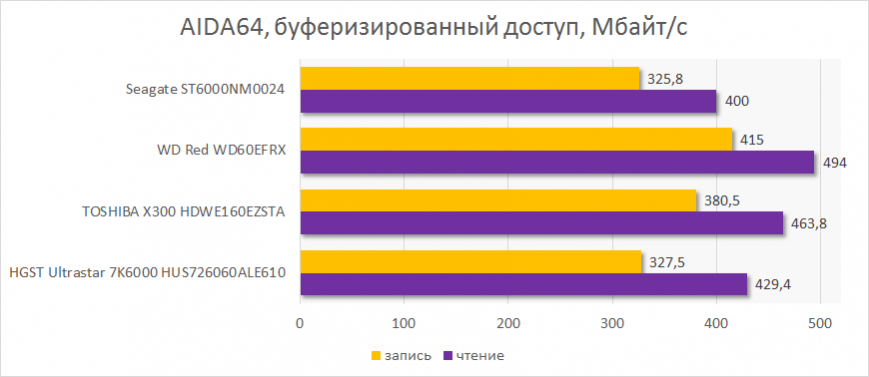
Buffered reading and writing
As you can see, technology media cache really works. Thus, the access time when writing was a record low for the hard drive. But reading the HDWE160EZSTA TOSHIBA, Seagate and HGST ST6000NM0034 HUS726060ALE614 takes approximately the same time. It is logical that among all the slower devices all showed WD Red WD60EFRX. Against characteristics cannot be denied.
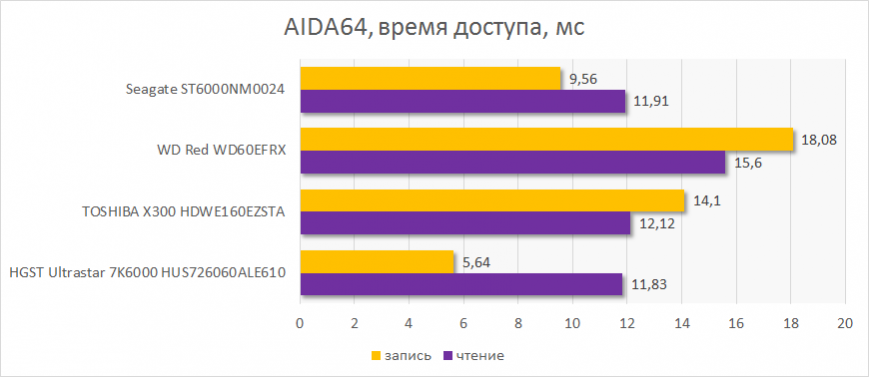
The access time when reading and writing
Again, referring to the results of the hard drive capacity of 1 terabyte, it is seen that at the same rotational speed (7200 rpm) hard drives with 6 TB show a better performance. In particular, the speed of the models HDWE160EZSTA TOSHIBA, Seagate and HGST ST6000NM0034 HUS726060ALE614 crosses over around 200 MB/s. Very badsome for devices of this class. In the end, the absolute speed of the disks is located in the following order: first place went to the hard drive HGST, a second line for TOSHIBA, Seagate for third, rounded out the peloton “hard” WD.
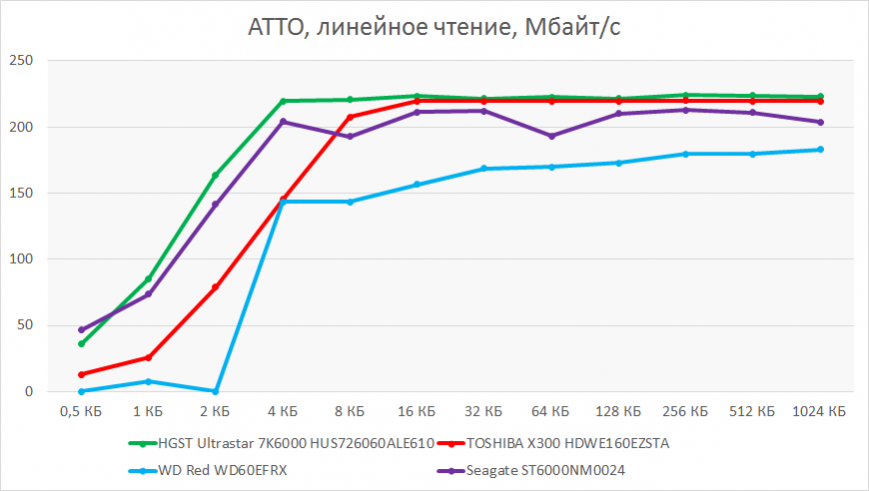
Linear reading
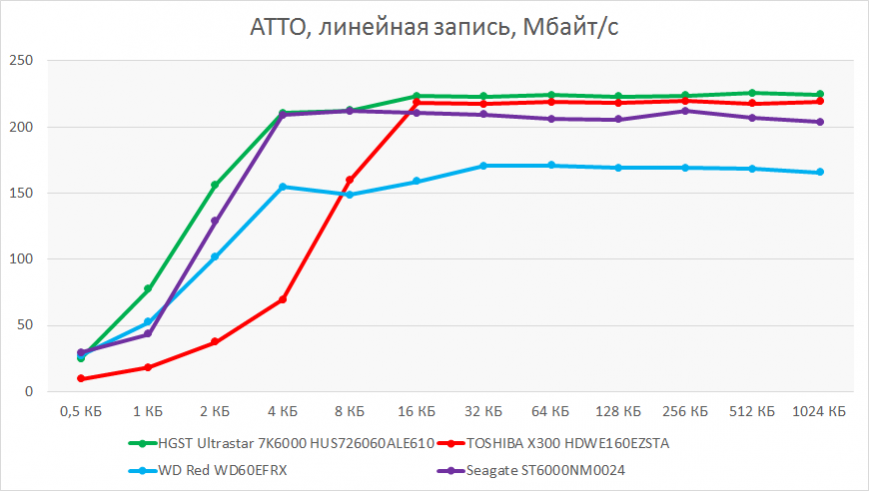
Linear recording
In IOMeter and CrystalDiskMark drives showed different results. Thus, in the first benchmark, the leadership was divided HGST and Seagate. They are seriously ahead of its competitors in the write operation. But CrystalDiskMark reports about the superiority of low-speed WD Red WD60EFRX all in the same load pattern. In this model HGST generally ranked last.
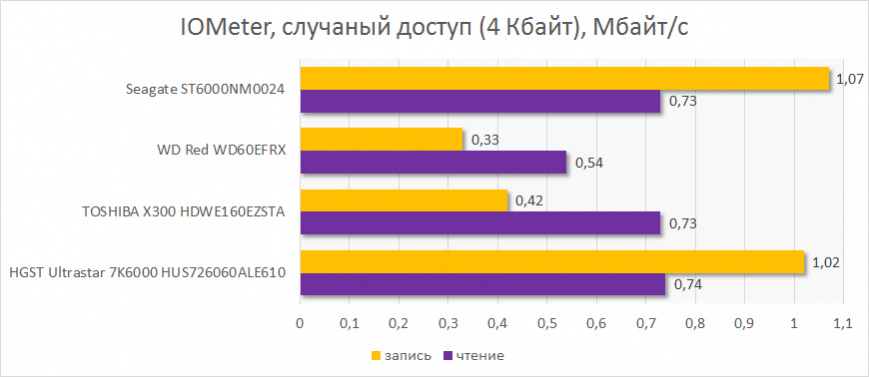
Random read and write block size is 4 Kbytes in IOMeter
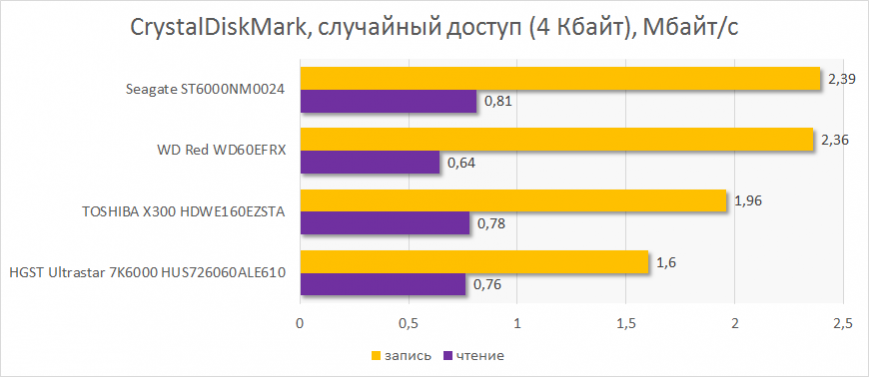
Random read and write block size is 4 Kbytes CrystalDiskMark
In a mixed load again better all proved to be the hard disk WD. Yes, peak speed, this model is low, because the performance is limited by the frequency of rotation of the plates. However, as “mixing” load read and write “red” Winchester is ahead of the drives from HGST and TOSHIBA somewhere in the 10-15 MB/s. Great result, emphasizing in this model, the predisposition to work in NAS. In General, all drives did well with this kind of load.
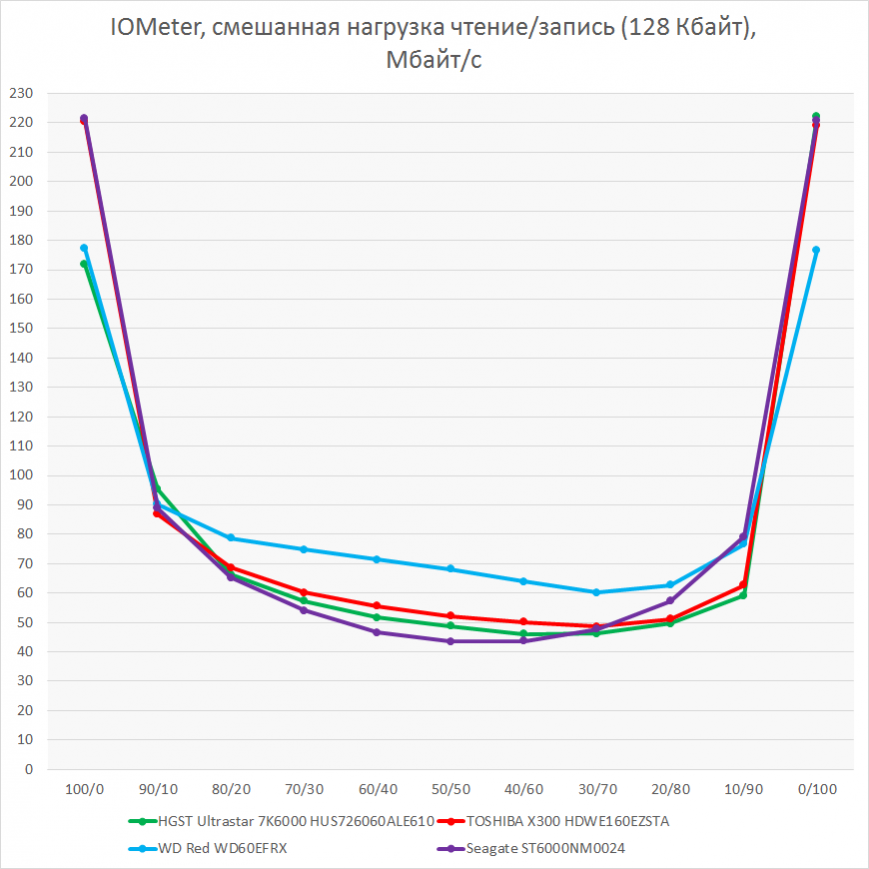
Mixed load
And now for the simulation of real tasks that daily needs to solve the hard disk. Here best of all showed a TOSHIBA drive. However, the product from Seagate slightly behind him. And other hard drives look good. So all the device quite possible to use as the main drive of the personal computer.
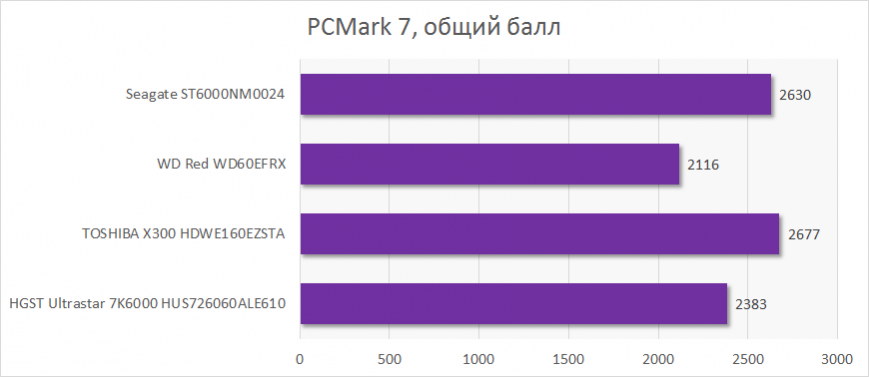
The test results in PCMark 7
In particular, in such patterns, like adding music, working with Windows Media Center and video editing “red” hard drive showed similar results with faster counterparts. In the simulation run the app and games best showed himself to be a TOSHIBA drive.
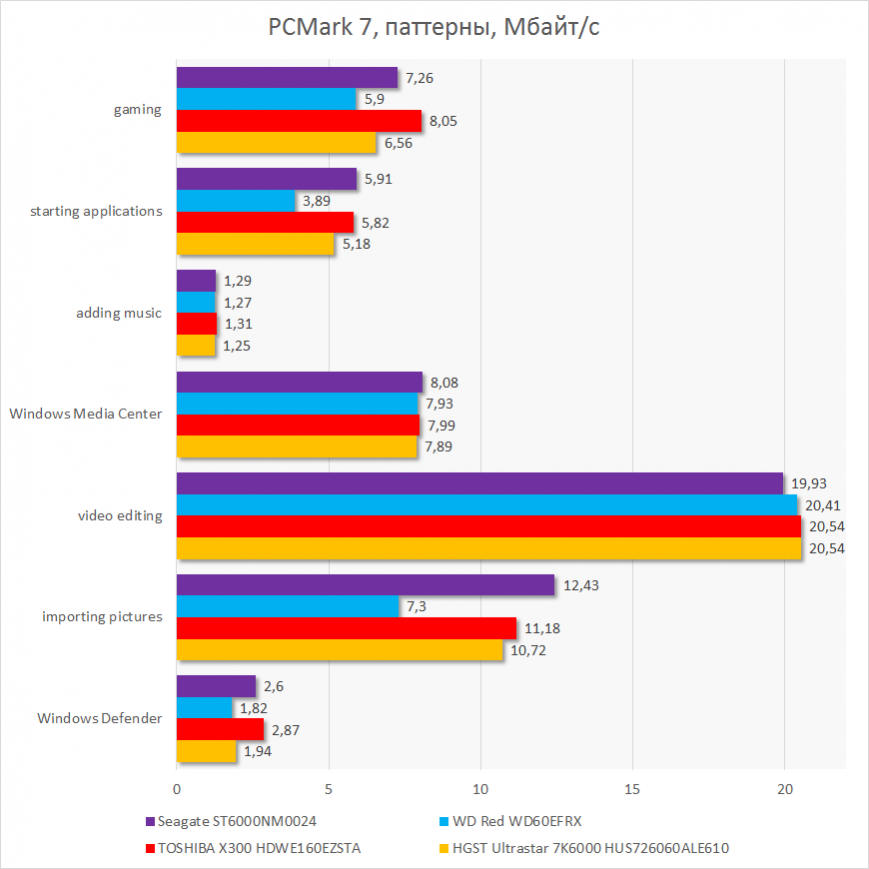
PCMark 7, patterns
Finally, more severe IOMeter patterns that simulate the load experienced by the drives in various servers and data centers, can put any hard drive on the shoulder. All four devices showed the expected low results, but the best was the model HGST and Seagate. Not surprisingly, since they belong to the rulers of the server hard drives.
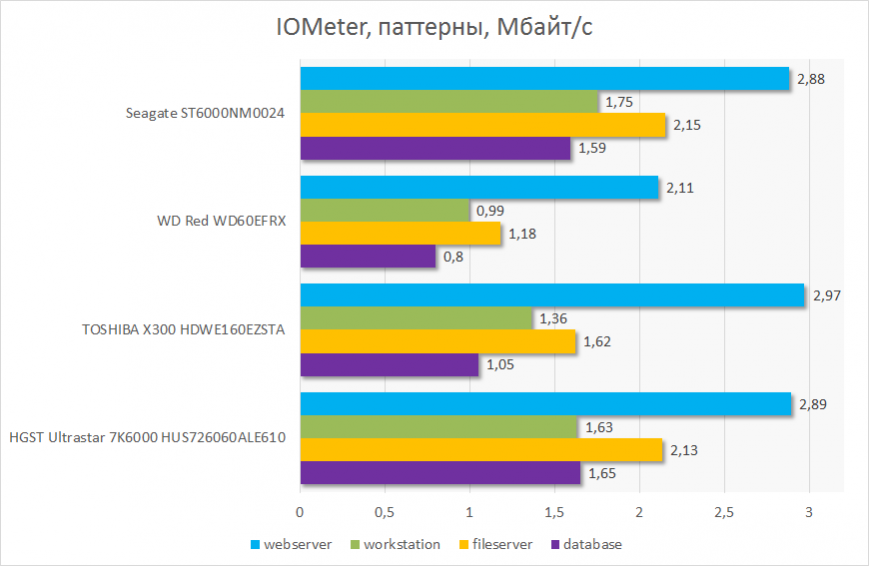
IOMeter patterns
You conclusion
Testing demonstrated that the density increase using traditional perpendicular technology allows to increase and the overall performance of your hard disk. If you add up all the results, we can state that model from HGST, Seagate and TOSHIBA have demonstrated equally good results. At the time of writing the review the drive X300 series cost somewhat cheaper. In General, my choice falls on hard drives from HGST and Seagate. Yes, rulers and 7K6000 Ultrastar Enterprise Capacity 3.5 HDD refers to the server segment, but also in an ordinary home computer, they are definitely there. Inspire confidence is a huge handicap time between failures and 5 year warranty. As for the hard drive WD Red WD60EFRX, and this device can be used as the main drive in the system. However, technical limitations on the part of the manufacturer still hinted that he will most clearly manifest themselves, acting as a kind of assistant, carefully keeping your data on your computer or server.
